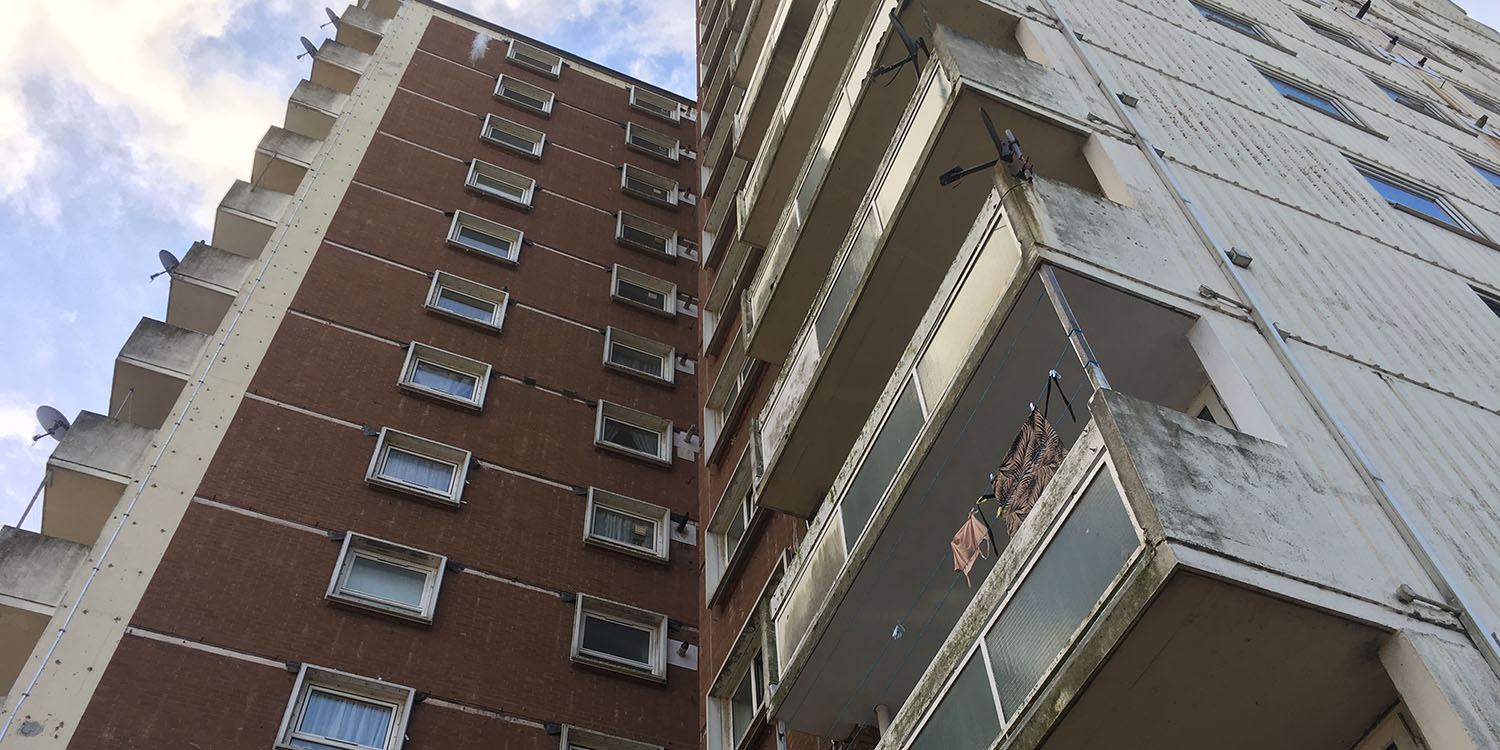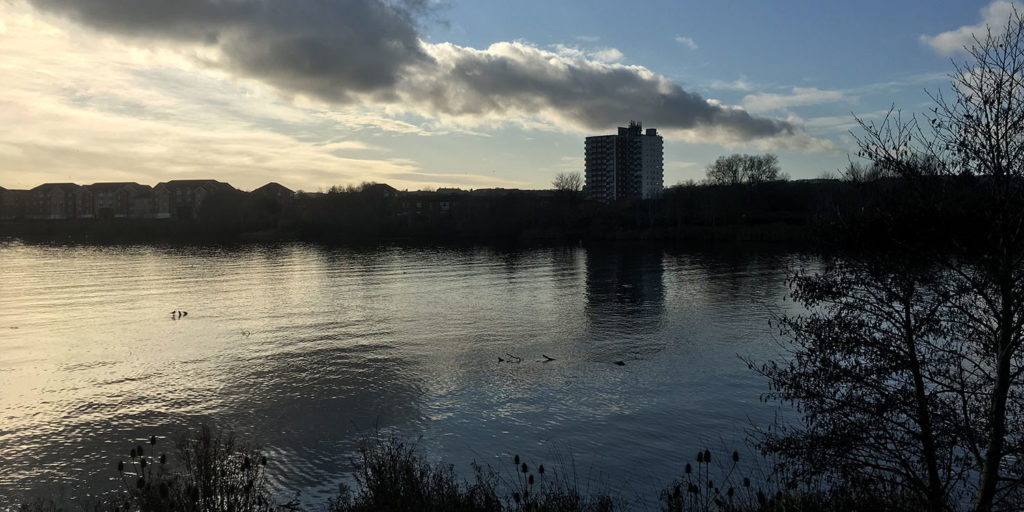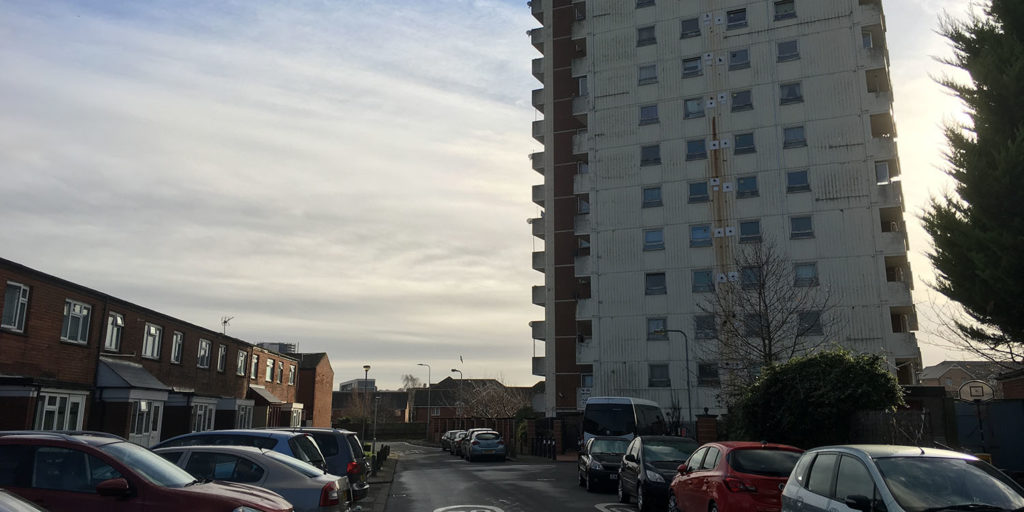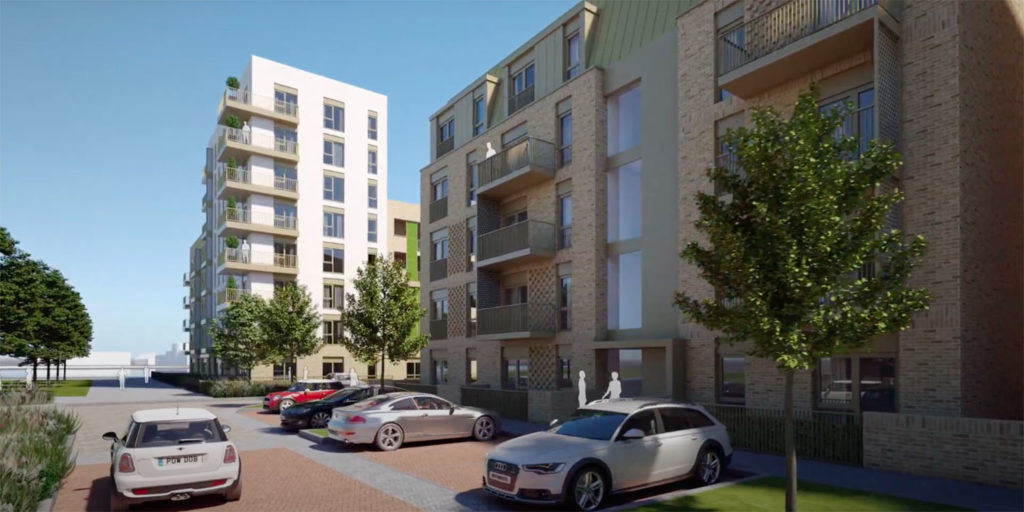The multimillion pound scheme could bring great benefits to the residents, but the authorities will need to have learned lessons from Cardiff’s history

You can listen to an audio version here:
The Channel View Estate in south Grangetown is a peculiar place. Vast gaps inexplicably exist between the mixture of council and private homes meaning you’re not protected against the biting winter winds. Unapologetic roads weave one way and the next such that it is easy to get lost. At times it feels like one endless cul-de-sac.
Indeed, it gets stranger. Without warning, a 14-storey tower block violates the skyline condemning countless modestly-sized properties to its shadow. It’s the only building on the estate of its kind and, along with housing around 100 older residents, it exists as a landmark, letting you know you’re firmly in the heart of the estate.
It is a livelier community than its stark, unwelcoming 1960s architecture may suggest, however. The local park which backs onto the estate, known as The Marl, is frantic at the weekend with sports being played as well as families and friends enjoying a stroll. It’s one of the central hubs of Grangetown; a district which has well documented problems, including homelessness and drug abuse.
To counter this, Cardiff Council conjured up a £60 million plan to regenerate the ageing Channel View Estate. Their commitment is to deliver 1,000 new homes by 2022, with the rest of the development to be completed over the coming years.
The tired, banal properties the estate’s residents have occupied for nearly 60 years will be pulled down, replaced with a new generation of dwellings. Roof gardens, pedestrian-focused streets and coastal-themed outdoor relaxation spaces are all on the agenda. The Channel View Estate will become unrecognisable, but will it be better for those who live there?

Long-lasting issues
It’s a scheme which the residents will “love”, according to councillor Lynda Thorne.
First elected to represent the ward of Grangetown in 1995, Lynda knows the estate perhaps better than any outsider. She holds monthly surgeries in the tower block to gauge the thoughts and feelings of those who live there.
“I’ve had issues with the estate since not long after getting elected,” she explains. “Probably about four years into my term of office I visited residents in the low-rise blocks which were suffering from severe damp.” Lynda adds, “Sewage used to come back up through people’s baths because it would get blocked.”
Sewage used to come back up through people’s baths because it would get blocked
As well as the quality of the housing, Lynda has always been critical of the “nonsense” layout of the estate, suggesting the way in which some of the low-rise housing backs onto the park results in anti-social behaviour and dumping. Finally, she has a chance to do something about it.
In 2016, the council started talks with residents over the possibility of completely redeveloping the estate. The plans continually expanded in size resulting in the council purchasing the former gas works land in early 2020. The idea is to fundamentally change the quality of life for residents and the council now has the resources at its disposal.
What the residents are getting
Where the £60 million will be spent as part of the regeneration plans for the Channel View Estate:
Bridge
There doesn’t currently exist a direct link between The Marl and Hamadryad Park, which is on the other side of the Taff. Walking from one park to the other takes 14 minutes and is thought to add to the sense of isolation residents of the Channel View Estate feel. This is part of a wider plan to create a new cycling and walking route from Grangemoor Park, past the estate, through to the other side of the Taff.
Living streets
The council believes living streets can be effective in creating an estate which creates a “pedestrian-focused” atmosphere and, like the bridge, acts as a way of connecting the estate with fellow communities. This will be done through creating more “linear” routes through the estate, rather than the winding, poorly designed roads seen today.
Balconies
Lynda explained how the original designs for the dwellings omitted balconies. One of the things residents liked most about the tower block was the fact that most of the flats had access to a balcony.
“They’ve decorated them and they look really lovely because they love that space,” explains Lynda.
The council changed the plans accordingly after listening to the residents.
The Destination Space
Adjacent to the Taff, the council will create a “coastal themed space” using sand play areas for children as well as relaxing areas for older members of the community to sit and watch the Taff from. Currently, save for a few benches at the far end of The Marl, there are currently no places for residents to sit and enjoy the view of the bay.
Communal Gardens
The tower block, which is designed to house over 55 year olds, will be replaced by new dwellings with gardens on its rooftop as well as on the ground level. The idea is to encourage social interaction and create a real community feel. On the estate currently, the low-rise structures are accompanied by very small gardens, while the tower block has no outdoor communal areas. There will even be the opportunity for residents to grow their own fruit and vegetables.
The waste disposal system
Lynda, and other members from Cardiff council, went on research trips to Finland and Sweden to understand how the most successful countries deal with waste disposal. They look settled on the idea of creating an underground vacuum collection system. This would make disposing of waste easier for the residents and the authorities to manage.
“We have to modernise Britain,” Lynda says, “we can’t keep doing the same things we’ve always bloody done!”
Resistance
Lynda says residents just want the council to “get on with it”, but a satisfied majority doesn’t mean everyone is happy with the plans.
For instance, Helen Westhead, a local resident and Green Party candidate for the upcoming Senedd election, has reservations about the council’s “half-promises” regarding their commitment to keeping The Marl green. As it stands, 7,500 square metres is set to be lost, but Lynda argues this is not a pleasant part of the park. She believes building on that land will make the community “safer”, leaving no baron areas where drugs can be dealt.
Other residents hold issues with traffic in Grangetown, which led to the implementation of monitors on homes to track road usage levels as the problem gets ever worse. One solution the council will try is an improved bus service.
Lynda explained how Cardiff Bus, with a drive to operate profitably, neglects quieter routes like the one through Channel View Road. Solving that issue could mean fewer residents need cars to travel, as well making them feel not as ‘left behind’; a phrase which frequently crops up when discussing the estate.
This isn’t a new phenomenon. Not far east of the estate is Cardiff Bay, the once semi-derelict wasteland that became the epicentre of the renowned £2.4 billion Cardiff Bay regeneration scheme.
(Images: Cardiff Council)
Lessons from history
Leon Gooberman, an expert in the 20th Century Welsh economy, isn’t convinced the Butetown residents benefitted much from the lucrative project, citing the effects as “ill-judged” from the outset of a housing scheme as far back as the 1960s.
“I suspect the feeling of marginalisation never really changed,” says Leon. “Try walking down Bute Street yourself. There’s a massive big bloody wall… dividing Butetown!” He thoughtfully concludes, “That’s got to have an impact on the culture.”
But things feel different in the seaswept air of the Channel View Estate. It seems as though, for its shortcomings, the council has constructed a regeneration plan which aims to raise the local populace up, rather than manufacturing a new demographic of people to live there, as was the case at Cardiff Bay.
Walking through the estate may one day be a pleasurable experience:
Contemporary, high-density accommodation will flank you on either side of clean, well-designed roads. Adjacent to these structures will be The Marl, lively as it ever was without the defunct dumping ground. A new bridge will permit residents easy access to the bay. Cardiff is a city to which the residents now feel they belong.
At least, if it all goes to plan.




